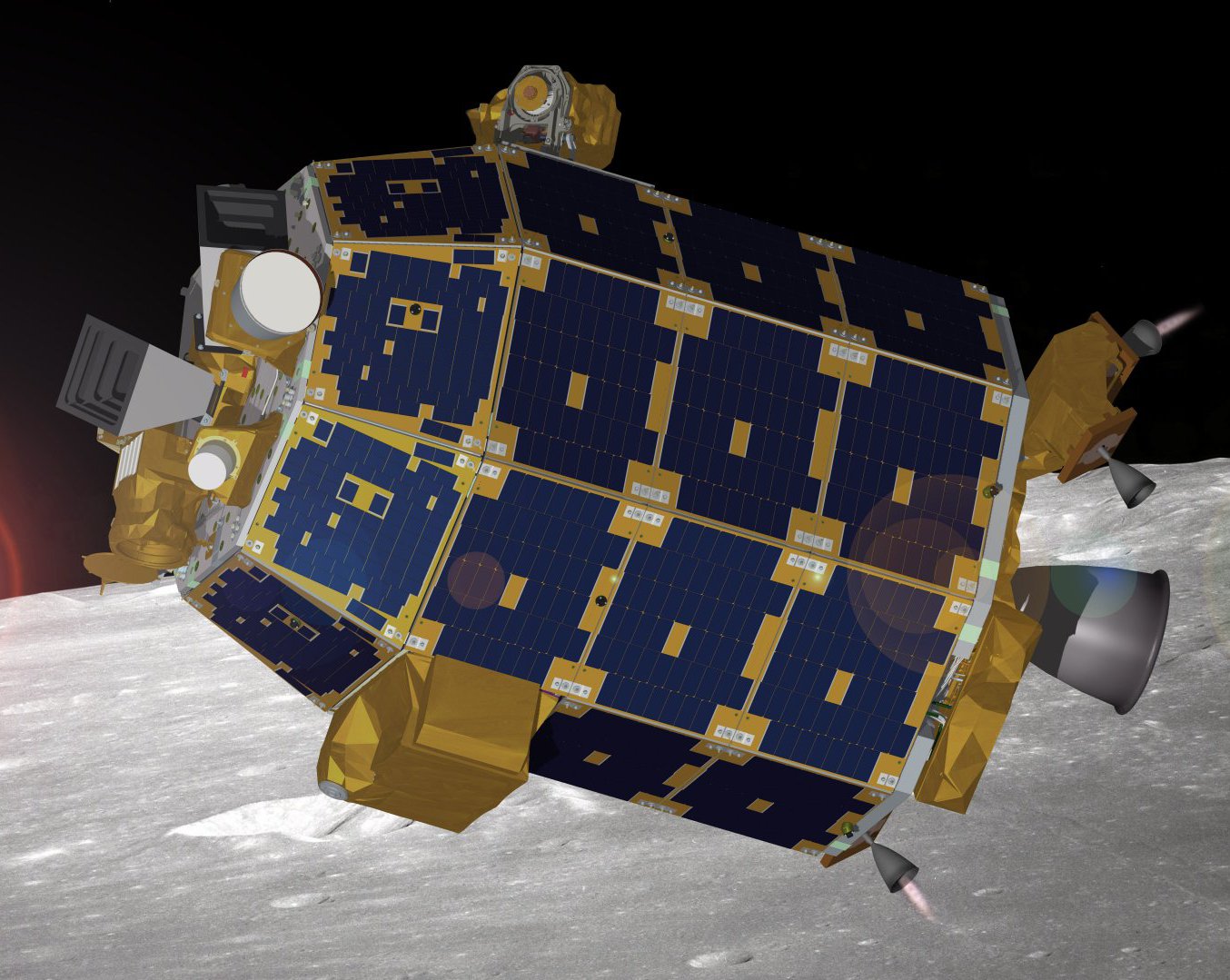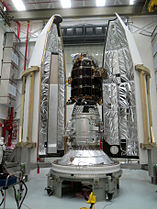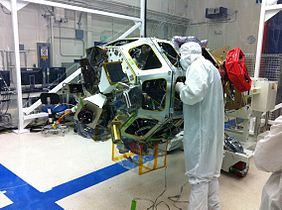
LADEE
The Lunar Atmosphere and Dust Environment Explorer (LADEE; /ˈlædi/)[5] was a NASA lunar exploration and technology demonstration mission. It was launched on a Minotaur V rocket from the Mid-Atlantic Regional Spaceport on September 7, 2013.[6] During its seven-month mission, LADEE orbited the Moon's equator, using its instruments to study the lunar exosphere and dust in the Moon's vicinity. Instruments included a dust detector, neutral mass spectrometer, and ultraviolet-visible spectrometer, as well as a technology demonstration consisting of a laser communications terminal.[7] The mission ended on April 18, 2014, when the spacecraft's controllers intentionally crashed LADEE into the far side of the Moon,[8][9] which, later, was determined to be near the eastern rim of Sundman V crater.[10]
Mission type
Lunar atmospheric research
39246
Primary mission: 100 days
Extended mission: 28 days
Total duration: 223 days
383 kg (844 lb)[1]
248.2 kg (547 lb)[1]
49.6 kg (109 lb)[1]
1.85×1.85×2.37 m (6.1×6.1×7.8 ft)[1]
295 watts[1]
September 7, 2013, 03:27 UTC[2]
Deorbited
April 18, 2014, ~04:30 UTC
25–50 km (16–31 mi)[4]
60–80 km (37–50 mi)[4]
157 degrees[4]
111.5 to 116.5 minutes[1]
Planned (science phase)
October 6, 2013, 10:57 UTC
The LADEE mission was designed to address three major science goals:[31]
and one technology demonstration goal:
Spacecraft[edit]
Design[edit]
LADEE is the first spacecraft designed, integrated, built, and tested by NASA's Ames Research Center.[51] The spacecraft is of a novel design (a spacecraft bus never previously flown)—and of much lower cost than typical NASA science missions—which presented novel challenges to the trajectory design team in getting the new spacecraft launched to the Moon with a high-confidence spaceflight trajectory plan, while dealing with a first-use new rocket (Minotaur V) and a spacecraft with no flight test legacy. (see Lunar transit, above.)[51]
LADEE mission makes use of the Modular Common Spacecraft Bus, or body, made of a lightweight carbon composite with an unfueled mass of 248.2 kg (547 lb). The bus has the ability to perform on various kinds of missions—including voyages to the Moon and Near-Earth objects—with different modules or applicable systems. This modular concept is an innovative way of transitioning away from custom designs and toward multi-use designs and assembly-line production, which could dramatically reduce the cost of spacecraft development.[52] The LADEE spacecraft bus modules consist of the Radiator Module which carries the avionics, electrical system, and attitude sensors; the Bus Module; the Payload Module that carries the two largest instruments; and the Extension Modules, which house the propulsion system.[1]
The LADEE science teams continued to analyze data acquired at the time of the Chang'e 3 landing on December 14, 2013.[59]
Team[edit]
The team for LADEE included contributors from NASA Headquarters, Washington D.C., NASA's Ames Research Center, Moffett Field, California, NASA's Goddard Space Flight Center, Greenbelt, Maryland, and the Laboratory for Atmospheric and Space Physics at the University of Colorado at Boulder.[63] Guest investigators include those from the University of California, Berkeley;The Johns Hopkins University Applied Physics Laboratory, Laurel, Maryland; the University of Colorado; the University of Maryland; and NASA's Goddard Space Flight Center, Greenbelt, Maryland.[63]



